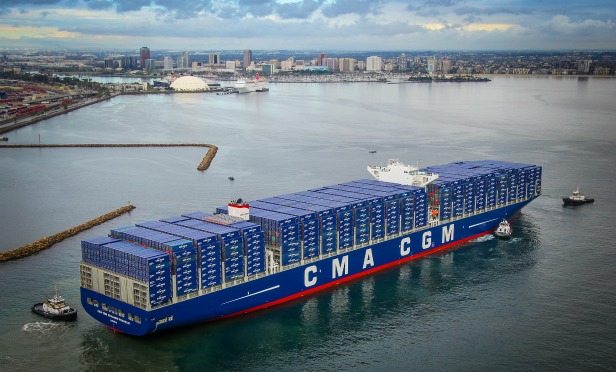 Cargo volumes stumbled at the Port of Long Beach last month as shipping alliances kicked in, shifting vessel deployment and port calls. At the start of the year, shipping alliances were expected to have an impact on container volumes in 2018—and were even discussed as something to watch at the annual Pulse of the Port's conference. However, 2018 has been a record-breaking year for shipping volumes at the Port of Long Beach, with each month topping the previous year's record and some months breaking records for the port's more than 100-year history. That is especially significant considering 2017 was also a record-breaking year for cargo volumes at the port.
Cargo volumes stumbled at the Port of Long Beach last month as shipping alliances kicked in, shifting vessel deployment and port calls. At the start of the year, shipping alliances were expected to have an impact on container volumes in 2018—and were even discussed as something to watch at the annual Pulse of the Port's conference. However, 2018 has been a record-breaking year for shipping volumes at the Port of Long Beach, with each month topping the previous year's record and some months breaking records for the port's more than 100-year history. That is especially significant considering 2017 was also a record-breaking year for cargo volumes at the port.
In July, container volumes fell 4.4% year-over-year, with a total of 688,457 TEUs moved at the port. Despite the decrease, the port says that it is still on track for a strong year. “We had a record July in 2017. That, and a shipping alliance decision to shift a vessel service were the primary drivers of last month's results,” Eric Bradley of the Port of Long Beach tells GlobeSt.com. “The Port of Long Beach is still on pace for our busiest year ever, one year after breaking the record for containers moved in a year. Through July, our volumes have increased 11.3%—almost 500,000 twenty-foot equivalent units more than the same point in 2017.”
Import activity had the sharpest fall, down 8.2% for the month, while exports fell 5% for the month. It is important to note that these numbers are compared to 2017 activity, which was the busiest July on record. “July 2018 imports were the second highest ever for the month of July, behind last July,” says Bradley. “Global trade is still doing great. Like other U.S. ports, we are concerned that the tit-for-tat tariffs we're seeing could slow trade activity and harm American consumers and businesses.”
The shipping alliances were the primary cause for the decrease in activity, and they will likely continue to have an impact through the end of the year. Additionally, tariffs and escalating trade tensions may also impact port activity through the end of the year. However, Bradley says that it is unlikely these events will offset the 11.3% jump the port has over last year. “We did see an alliance-related shift in some ships going to the Port of Los Angeles, and we do expect that to continue through the rest of the year. We're coming off June, the busiest month ever for us at 752,188 TEUs, and again, our volumes are up 11.3% through July,” he explains. “So, we still anticipate having a great year at the Port of Long Beach.”
© Touchpoint Markets, All Rights Reserved. Request academic re-use from www.copyright.com. All other uses, submit a request to [email protected]. For more inforrmation visit Asset & Logo Licensing.






